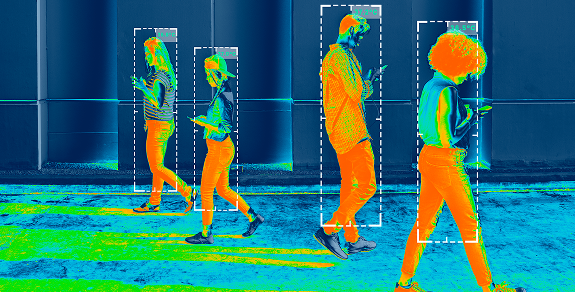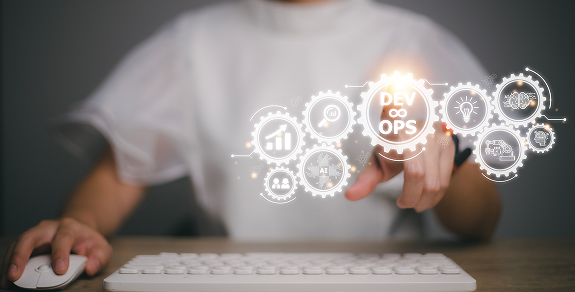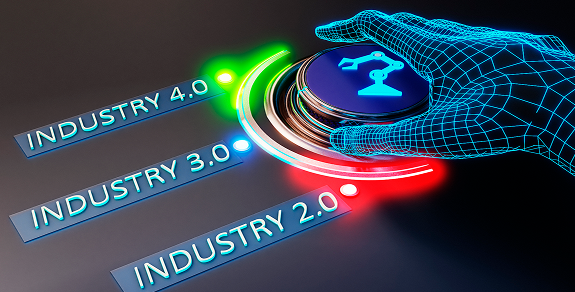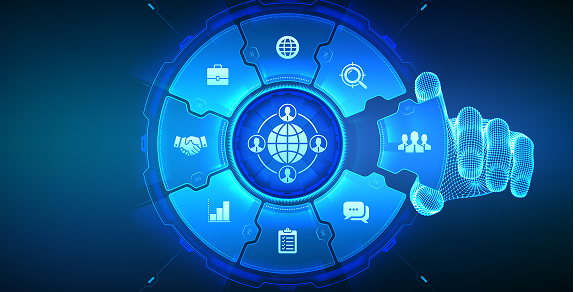AI-Powered Production
Management in Retail Stores
About the Client
This article describes a real-life project. However, we cannot disclose our client’s name & the project details for privacy purposes.
Our client is one of the leading retail solution providers in Japan, serving thousands of supermarkets and convenience stores nationwide. With a strong focus on optimizing store operations and customer experience, the company continuously seeks innovative technologies to enhance efficiency in product display and shelf management.
Project Overview – AMR Delivery Robot
The project introduces RB-A100, an Autonomous Mobile Robot (AMR) developed by Rikkeisoft, into the client’s production environment. Designed to automate material transportation across the factory, the solution replaces labour-intensive manual delivery tasks and improves efficiency.

Industry
Manufacturing

Technology
Visual SLAM; Computer Vision

Country
Vietnam
Challenges
The factories face significant challenges in their logistics and material handling processes:

Manual labour dependency
Materials and semi-finished products need to be transported constantly between warehouses and production lines, or across different stages of production. Each line often requires at least two full-time workers to handle deliveries around the clock. This not only raises labour costs but also exposes the process to delays, errors, and inefficiencies when staff are unavailable or fatigued.

Limitations of legacy AGVs
The factories still rely on older Automated Guided Vehicles (AGVs), which can only follow fixed tracks or magnetic lines. Every time the factory layout changes, the system requires costly reconfiguration and downtime. Moreover, these AGVs struggle with dynamic environments, where unexpected obstacles or worker movements are frequent, limiting their practicality.

High operational costs
The combination of manual labour and outdated automation leads to escalating expenses. Beyond wages, overtime, and training, factories also face maintenance costs for older AGVs, and the inefficiencies caused by frequent errors. This reduces overall productivity and puts pressure on profit margins.

Scalability needs
With factory floors spanning tens of thousands of square meters and production demand steadily growing, the company requires a logistics system that can scale flexibly. It needs to support more lines, integrate seamlessly with warehouse management systems, and coordinate multiple robots at once—without adding proportional labour or overhead costs.
Solution
Rikkeisoft deploys the RB-A100 Autonomous Mobile Robot (AMR), a next-generation automation solution fully designed and manufactured in-house:

Hybrid Visual + LiDAR SLAM
The RB-A100 combines Visual SLAM with LiDAR technology to create a precise 3D map of the entire factory. This allows the robot to localize itself with high accuracy (±3 cm, ±1 degree) and detect obstacles in real time. Unlike traditional AGVs, it can safely navigate around moving workers, forklifts, or equipment, ensuring continuous operation without interruptions.

Flexible and Easy Setup
The AMR does not require fixed tracks or magnetic strips. It can be deployed within just 4 hours and quickly adapted whenever the production layout changes. This makes it especially suitable for large factory floors of up to 40,000 m², where frequent reconfiguration is often needed due to shifting production demands

Customizable Design & High Performance
With a payload capacity of up to 100 kg, the robot is built to handle heavy materials efficiently. It operates continuously for 6–12 hours and supports fast charging in only 3.5 hours, minimizing downtime. Its design can also be customized to match specific production needs, such as varying load types or delivery processes, making it a versatile fit for different manufacturing environments.

Scalability & Integration
The system integrates seamlessly with warehouse management systems (WMS) and can scale across multiple production lines. A fleet of RB-A100s can coordinate tasks, schedule deliveries, and even yield to one another when necessary, ensuring smooth traffic flow. This enables factories to expand automation step by step while maintaining centralized control and efficiency.
Results
After a successful two-week trial, the client confirms the RB-A100 meets all expectations in stability, accuracy, and efficiency. The factory purchases the first two robots, replacing two workers on a single production line. Following internal demonstrations, other production lines request adoption, and proposals for further improvements (e.g., automated lifting and full WMS integration) are raised.
Encouraged by these results, the company signs a contract to deploy 40 robots across its facilities, with a roadmap to scale up to 300+ robots across factories in Vietnam and globally.
With a 13-month ROI, the solution dramatically reduces labor dependency, cuts operational costs, and positions the company as a leader in factory automation.
